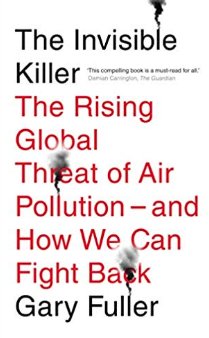Dr Gary Fuller: reasons to be positive
Dr Gary Fuller from King’s College London has been at the cutting edge of air pollution research in the UK for over two decades. Writing for Air Quality News, he explains five things that are helping to influence positive change in air quality around the world.
Hardly a day passes without a news item on air pollution. I read that air pollution is causing us to lose our hair, that black carbon has been found in placenta and that the Trump administration has sacked its air pollution and health experts.
Can we find reasons to be cheerful? Maybe. Here’s five.
Newer diesel vehicles are finally producing less air pollution than the ones that they replace: we know this from exhaust measurements and from air pollution data from London and Paris. After nearly two decades of increases, nitrogen dioxide should start to head downwards.
New Euro VI buses have already eroded the massive concentrations seen along some roads. On London’s Brixton Road nitrogen dioxide has reduced by a third. It’s a similar picture on Putney High Street and the once infamous Oxford Street. Improvements were also registered by Brighton’s bus low
emission zone.
But before we get too carried away we must remember that not all roads are improving and, based on the rate of progress between 2010 and 2017, London would need 193 years to meet the EU Limits.
However, this was before the Ultra Low Emission Zone. Extinction Rebellion protesters and students striking for the climate are also carrying placards demanding cleaner air. People are voting with their wallets too and leaving diesel cars unsold in showrooms.
Parents and teachers are getting together to protect our young people by closing roads at the start and end of the school day; an idea that began in Bolzano, Italy, and spread. In Belgium parents close roads outside over 200 schools each Friday morning.
Over 20 UK schools now have official street closures each morning and afternoon and many more are on the way. This year’s, Sterling Prize for Architecture was not won by a big glass and concrete structure but by a network of streets and houses.
Goldsmith Street, Norwich, looks like a place where everyone would like to live. It is not carfree, but it has streets for walking with gardens, benches and space for children to play.
Older places can change too. Road closures, cycle lanes, redesigned streets and curbs on the school run are transforming Waltham Forest, north London. If locked in, the scheme is projected to give local people back one and a half months’ of life expectancy that they would otherwise have lost to air pollution.
The UK government’s Clean Air Strategy was launched in January. Previous ones were launched by junior ministers but the latest was unveiled by two cabinet ministers, Michael Gove and Matt Hancock.
It is admirably holistic, perhaps learning from past mistakes. We are waiting to see if actions follow intentions but, with many Parliamentarians calling for a new clean air act, and a campaign by the Times newspaper, the political pressure is not going away.
Finally, let’s think big. Air pollution in the 62 Chinese cities tracked by the WHO dropped by an average of 30% between 2013 and 2016. China’s forthcoming multi-billion dollar ‘Belt and Road’ programme will create economic and transport infrastructure across 71 countries.
If China’s new emphasis on air pollution runs alongside Belt and Road, it has the potential to improve the air breathed by people who live in some of the most polluted places on the planet.
An updated edition of Dr Gary Fuller’s book The Invisible Killer has recently been published. Buy a copy here.

















